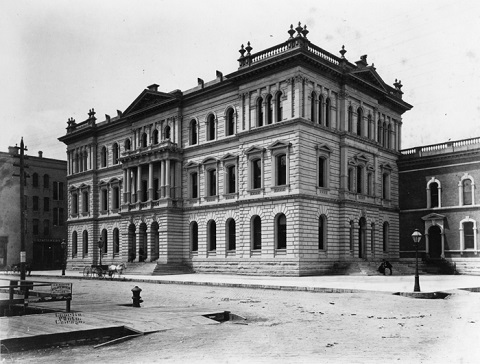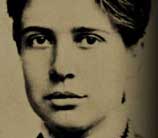
Capital punishment, or the death penalty, was the legal punishment for murder during this entire period. Yet a small proportion of those convicted of murder were sentenced to death, and a smaller proportion of those were actually executed. During this entire time capital punishment was a politically charged issue, with periodic calls for its abolition. Juries imposed the death sentence under the law, but judges controlled the conduct of trial and had the authority to modify or overrule the jury’s sentence. During the entire period of this data set, 1870-1930, capital punishment was the law. If a person was convicted of the most serious form of murder - the Illinois statutes did not define murder by degrees - the punishment stipulated was death; although most convictions for murder did not result in a sentence of death, and most convicted murderers were not executed. In this set of more than 11,000 homicides there were over 100 cases in which the death penalty was recorded as being imposed, 18 cases in which research has indicated the death sentence was imposed and not carried out, and 76 cases in which research has indicated that the defendant was executed. During the period 1870-1930 there were several national and local movements to abolish capital punishment, and during some of this period the death penalty was imposed more often than at other times (Table 2 and JCLC p.852-866).
Under present day legal standards the guilt and punishment for a capital defendant are decided in two separate phases of a capital trial: the guilt phase and the penalty phase - different legal standards apply in the two phases. In the period of this database, a judge or a jury decided in a single proceeding both whether the defendant was guilty and whether to impose the death sentence. The jury could also recommend leniency or mercy, and that the sentence of a defendant convicted of murder be life, not death. The judge was not obligated to follow the jury’s recommendation for leniency or their recommendation to impose the death penalty. If the decision to sentence death was made by a jury, the judge nonetheless had the authority to reduce the sentence of death to a life sentence. And if the jury did not impose the death sentence, the judge could nonetheless impose the sentence of death. For example, at the sentencing of the Haymarket defendants, Judge Gary had the authority to commute the death sentences imposed upon the anarchists to life terms.
During the period 1870-1930 the method of execution changed. The method of execution in Illinois was hanging from 1839 to 1926 (1839 Ill. Laws. Div. 15, sec. 156). Electrocution was introduced as the method of execution for defendants sentenced to death in 1927 (1927 Ill. Laws. Div. 14). And from 1983 until the present the method of execution has been lethal injection.
The death penalty is in effect in Illinois at the present time, although there is a moratorium on executions in the state which was introduced by Governor George Ryan in 2000 and continued by Governor Rod Blagojevich in 2004. The moratorium on executions in Illinois was the first such moratorium to be instituted by a state in the United States. Other states have since imposed moratoriums on the imposition of capital punishment. The moratorium in Illinois was followed by the publication of a comprehensive Commission Report on the history and status of capital punishment in Illinois. In January of 2003, Governor George Ryan granted clemency to all inmates then under a sentenced of death in Illinois, more than 160 persons, an unprecedented act of clemency in the history of criminal law in the United States.
The pattern of changes in methods of executions in Illinois is typical of many states. See, Deborah W. Denno, “When Legislatures Delegate Death: The Troubling Paradox behind State Uses of Electrocution and Lethal Injection and What It Says about Us,” 63 Ohio State Law Journal 63 (2002).
Several articles in Volume 92, Numbers 3 & 4 of The Journal of Criminal Law and Criminology address issues related to capital punishment:
Leigh Bienen and Brandon Rottinghaus, “Learning from the Past, Living in the Present: Understanding Homicide in Chicago, 1870-1930,” describe the scope of the Chicago Historical Homicide Project and the metholdogy of data collection and analysis.
Derral Cheatwood, “Capital Punishment for the Crime of Homicide in Chicago: 1870-1930,” analyzes the capital cases in the database and compares the imposition of the death sentence in the period 1870-1930 with patterns in capital case disposition in the present period.
Thomas Geraghty, “Cook County Criminal Law Practice in 1929: A Community’s Response to Crime and a Notorious Trial,” examines Cook County criminal law practice in a 1929 capital case. This article examines the transcripts and documents associated with a 1929 capital murder case, People v. Fisher, 172 N.E. 743 (Ill. 1930). The circumstances involved a capital trial of six black defendants for the murder of a black security guard which occurred during a robbery of a bank on the south side of Chicago, a case which received front page attention from Chicago newspapers in 1929 and 1930 (JCLC p.555-558). Three of the defendants in this case were sentenced to death and executed. Three other defendants were convicted and sentenced to life imprisonment. The analysis of this 1929 case offers many points of comparison between practices and procedures in a 1929 case and present practices in criminal trials in Cook County generally, and the imposition of the death penalty in particular.
Richard R.W. Brooks and Stephen Raphael, “Life Terms or Death Sentences: The Uneasy Relationship between Judicial Elections and Capital Punishment,” analyze the relationship between judicial sentencing patterns and the election of judges. Using regression models and other established statistical methods in the social sciences, this study focuses on more than a thousand sentencing outcomes in the data set decided by more than one hundred judges. The authors found judge-specific effects related to whether the defendant was sentenced to death and the proximity of a judicial election. This conclusion is perhaps not surprising given the highly politicized methods of appointing and selecting judges during the period. For a contemporaneous description of some of these corrupt practices, Crime and the Civic Cancer – Graft written by former Judge M.L. McKinley, is an exposé describing graft and corruption in the courts in 1923.
Edward M. Burke’s “Lunatics and Anarchists: Political Homicide in Chicago,” describes the assassination of Mayor Carter Harrison in 1893 by a defendant, Eugene Patrick Prendergast, whose sanity at the time and sunsequent of the crime was questioned. Under the direction of Clarence Darrow at a special post conviction hearing before a jury on the question of his competency to be executed, medical experts examined the defendant and reported on his mental condition and fitness to be executed. The issue of competency to be executed is important is present day capital punishment jurisprudence. In spite of divided medical opinion and the efforts of Clarence Darrow, the jury found the defendant competent to be be executed. An appeal for clemency to Governor John Peter Altgeld was not successful, and the defendant was eventually executed in 1894 after two continuances.
We recommend you download the raw database files for comprehensive searching, but here’s a sample of related cases:
